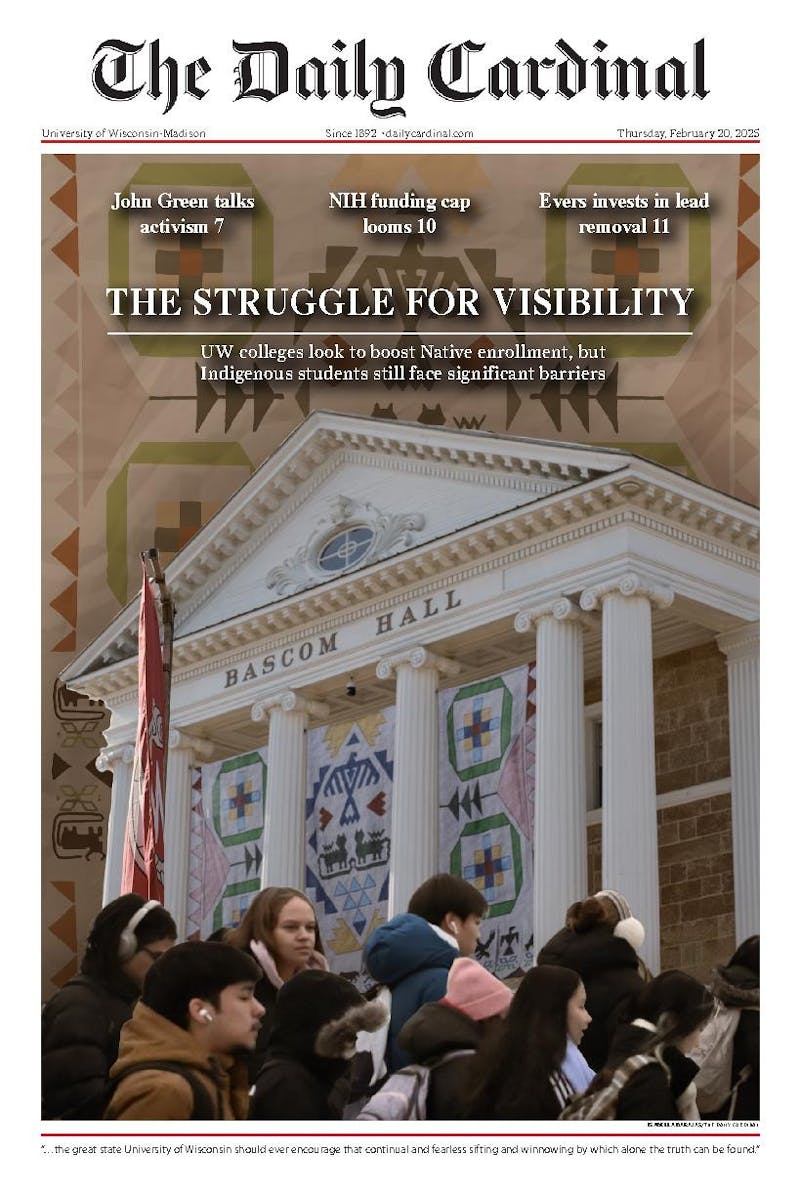A crowd of students, faculty and community members filled the Cinematheque auditorium on Friday in anticipation
Chazelle, the youngest person ever to receive this recognition from the Academy of Motion Picture Arts and Sciences at the age of 33, came to visit UW-Madison to discuss his films and curated programming for the Cinematheque on Saturday. Throughout the month of February, the Cinematheque screened many of Chazelle’s films, including “Guy and Madeline on a Park Bench,” and the Oscar-nominated “Whiplash.”
“The talent, and expressiveness, and sheer cinephilia on display has been positively inspirational,” Jim Healy, the director of programming for the Cinematheque, said prior to the screening.
Toward the back of the room, Chazelle looked at the ground as Healy complimented his body of work. Healy called him to the stage to offer an introduction to “La La Land.”
Before screening this film, Chazelle asked that the Cinematheque also screen Bruce Baillie’s avant-garde short film, “All My Life.”
“It’s kind of the most perfect movie ever made, and when you see it — well, maybe you’ll disagree,” Chazelle said, to which the audience laughed. “It was in my head while making ‘La La Land.’ It’s kind of always been in my head while making any movie.”
“All My Life” is an unassuming piece of film in which Baillie pans across a fence draped in bright red flowers
After the short, “La La Land,” was projected in 35mm print onto the screen. There’s something more striking and texturized about seeing this musical projected on film rather than digitally. The colors pop, the contrast is more apparent and even the sound feels crisper. It adds to the timelessness of the musical and the notion that “La La Land” is truly a love-letter to classic Hollywood cinema.
When the screening concluded, Chazelle and Healy came back on stage to discuss the film, beginning with the genre of the musical and why some people find it disconcerting.
“I used to hate musicals myself, and for the exact reason that I came to love them,” Chazelle said. “I hated how they seemed to stop being one kind of movie and became another.”
Chazelle clarified that he loved movies about music, but it took him a while to appreciate the musical. His love of avant-garde films helped with this change of heart.
The pair also discussed Chazelle’s use of color throughout the film. Chazelle said that they tried to color-code the whole film beforehand in an effort to set the tone for what kind of musical it would be. He also said that Emma Stone’s character, Mia, was associated with the color green, from small objects to more prominent ones.
“The whole idea was seeding the way into her green dress,” Chazelle said. “That’s when the movie’s at its most idealistic, when everything is still kind of movie-ish.”
As for what’s next for Chazelle, he touched a little bit on his upcoming film,“First Man,” which also stars Ryan Gosling, about the life of Neil Armstrong.
“One thing that I sort of returned to a little bit, even though it’s a fiction film, [...] that I was happy I returned to, was the documentary,” he said. “‘Cause that was really what I studied in school.”
Another audience member asked him whether music would have any significance in his next film. Chazelle said that, apart from working with the same composer, Justin Horowitz, there would not be much music on screen.
“I’ve definitely gotten my fair share of ‘So when’s Neil Armstrong gonna tap-dance?’” Chazelle said.
Chazelle also stated that “First Man” does deal with similar questions
“What’s the worth of a goal?” Chazelle said. “In this case, it’s landing on the moon, and what you’re willing to do in service of that goal, and whether it’s worth it.”
Chazelle’s “First Man” comes out this October, just in time for Oscars season.






